| Jun 30, 2013 | The next phase... camera obscuras, the portrait, art and a thousand other topics... | | | |
I'll outline my thinking on the steps Luminous-Lint is going through.
- The raw evidence for photohistory is being collected - here the images and source materials are brought together to create a pool of information. This information has been organized into Online Exhibitions that mimic gallery exhibitions but with the important difference that they are continually improved. The Online Exhibitions may have an introductory text but they don't need to and one can be added in as necessary in the future.
- Next the images are cross-linked into Visual Indexes which are similar to subject tags. There is a distinction however as tags normally provide a collection of images and it is not the same as Visual Indexes include ordering so they can be displayed in ways that tell stories.
- Original source texts are the basis of research and so these are collected and organized. At this stage everything is like a vast melting pot of ideas swirling around before structures emerge.
- For each theme bibliographies and reference lists are prepared so you can locate the supporting evidence.
- The Contents pages, Visual Indexes and search tools are improving and they provide pathways through the material. These pathways can be fascinating as they can take one down unexpected routes many of which are not covered, or only tangentially, in the current literature. They provide the raw material for thinking about photohistory in ways that are novel and at times intriguing.
What is next?
Anybody who has been following Luminous-Lint over the years will have noticed that since June 2012 each theme is beginning to mature. At first the Theme pages look naive with a few example images, a bit of text, and maybe a few original sources - islands in a sea of information. Any specialist would look at a page and throw up their hands in despair! I'm okay with this as Luminous-Lint is not like writing a book where everything has to be perfect by the time the publishers' proofs are returned. The goal of Luminous-Lint is longer term and there are over a thousand themes in various states - none is complete and each is improving.
Once the images and original texts are in place introductory texts will be added in - here the arguments and supporting evidence starts to come together with all the footnotes and references. These will be drafts initially and you can help out by pointing out any errors, supplying additional information, or preparing some text to get us started. There are no limitations here on the number of images or videos to include.
So years after Luminous-Lint started the first draft texts are starting to appear on Luminous-Lint to test how it will all come together. These experimental texts are to check how the footnotes and referencing systems will work but they will give you an idea. Hint - click on the red links to get to the theme... clicking on the images will take you into details about the image.
Camera Obscura



Portrait



Art



The Themes are accessible through the Contents page or Alphabetical indexes and are in flux but you will get a sense of the richness of the material. As gaps are discovered in the evidence further Online Exhibitions and Visual Indexes will be added and the texts will go through continual iterations.
I hope you continue to enjoy Luminous-Lint and find it useful.
All the best and thanks for your support, Alan
| 
| | Apr 22, 2013 | Reed Brockway Bontecou | | | |
Time to remember the birth of photographer Reed Brockway Bontecou
(1824, 22 April - 1907)
A New York surgeon who used photography to record injuries and their surgical repair during the American Civil War.
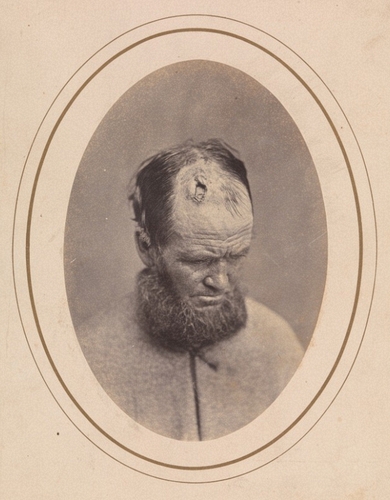
R.B. Bontecou
John Parkhurst
1865
Albumen print, from glass negative
Metropolitan Museum of Art
Gift of Stanley B. Burns, M.D. and The Burns Archive, 1992, Accession Number: 1992.5131
LL/50035
More about this photographer
| 
| | Apr 21, 2013 | Eve Arnold | | | |
Raise a glass of white wine to the memory of Eve Arnold who died last year.
(1912, 21 April - 2012, 4 January)
American photojournalist noted for her book ‘In China‘ and her work with Marilyn Monroe - particularly during the shooting of the film ‘The Misfits‘. In 1955 she became the first female member of the Magnum photo agency.
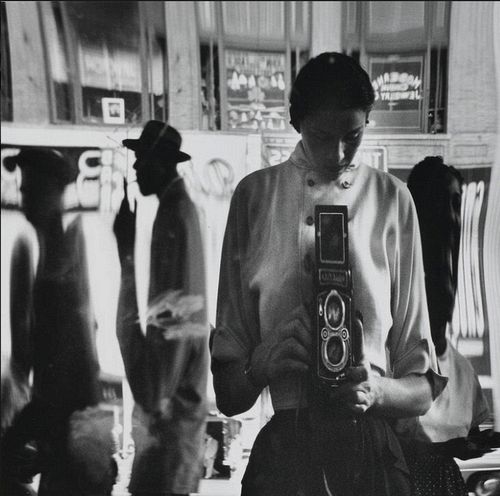
Eve Arnold
Self-Portrait in a Distorting Mirror, 42nd Street, New York
1950 (ca, taken)
Gelatin silver print
10 x 10 in
Bonhams - New York
Photographs (30 October 2012) Sale: 20064, Lot: 52
LL/48921
More about this photographer
| 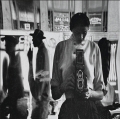
| | Apr 19, 2013 | William Klein | | | |
Raise a glass to photographer and filmmaker William Klein
(born: 1928, 19 April)
If you haven't seen the wonderful satire on the French fashion industry - "Where are you Polly Magoo" you really should.
=====
Note below courtesy of the Victoria & Albert Museum (London, UK)
In just three months William Klein produced one of the most renowned books of the 1950's, Life is Good and Good for You in New York: Trance - Witness - Revels. This was intended, he said, "as a monster big-city Daily Bugle with its scandals and scoops that you’d find blowing in the streets at three in the morning." Klein had been a student of the painter Fernand Leger, whose advice had been to "get out of the studio into the streets...to be monumental." Klein’s work is monumental street art, far removed from the mainstream documentary style of the fifties. In 1958 Klein turned to film-making, only returning to photography in 1980.
This biography is courtesy and copyright of the Victoria & Albert Museum and is included here with permission.
=====
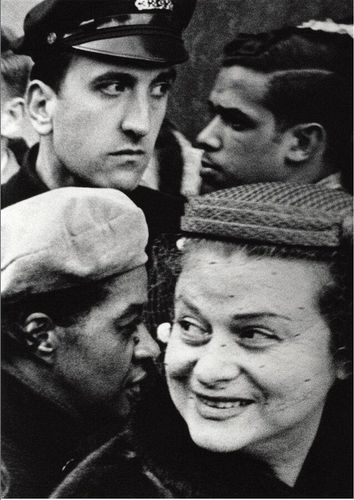
William Klein
4 heads, New York
1954 (taken)
Gelatin silver print
36.2 x 26 cm (image)
Van Ham Fine Art Auctions
Van Ham - Photography (June 20, 2012) Lot: 118
LL/48370
More about this photographer
| 
| | Apr 18, 2013 | Wynn Bullock / John Loengard | | | |
Late in the day here but still time to celebrate photographer Wynn Bullock
(1902, 18 April - 1975, 16 November)
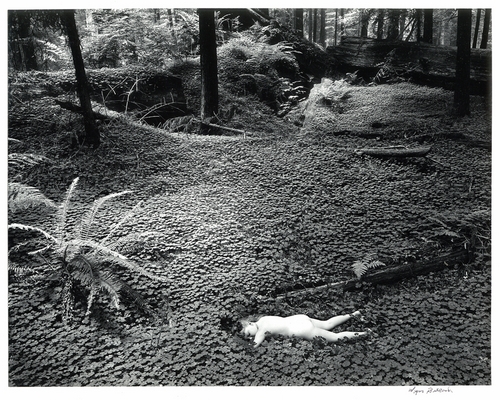
Wynn Bullock
Child in the Forest
1951
Gelatin silver print
Be-Hold
Courtesy of Larry Gottheim - Be-Hold (50 / 89)
LL/22494
=====
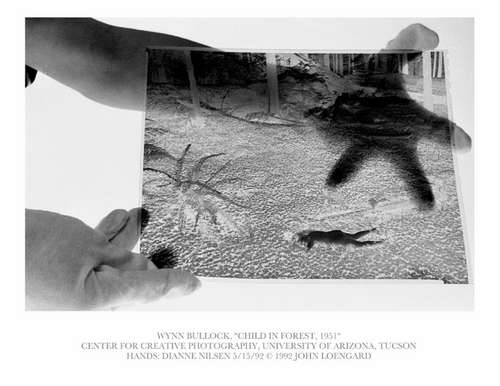
John Loengard
Wynn Bullock "Child in Forest" 1951
[Celebrating The Negative]
1951 (original image) 2008 (publication)
Gelatin silver print
Etherton Gallery
LL/28585
Center for Creative Photography, University of Arizona, Tucson
Hands: Dianne Nilsen, 5.15.92
Long after Wynn Bullock's photograph of his daughter was used in the "Family of Man" exhibition, his wife Edna told photographer Donna Conrad, "We got letters and phone calls asking, 'What did you have in mind when you photographed that child? Was that child supposed to be dead? Was she a statue that fell off into the world? Was she just left there after being molested?' And all Wynn could say was that here was a virgin piece of forest and why not have a virgin child down there. He couldn't believe that people could think those things."
This photograph is included in the portfolio Celebrating the Negative photographs by published by John Loengard, Etherton Gallery (2008), pl. 15
All photographs copyright ® John Loengard. Gelatin silver prints printed by Chuck Kelton, Kelton Labs, New York City, under the direct supervision of John Loengard. Printed on Ilford Multigrade Warm Glossy paper. Design and portfolio box construction by Jace Graf, Cloverleaf Studio, Austin, Texas.
Celebrating The Negative/Photographs by John Loengard was published by Etherton Gallery, Tucson, Arizona, in March, 2008, in an edition of eighteen portfolios, including fifteen numbered copies and three artist's proofs.
More about this photographer
| 
| | Apr 17, 2013 | Sherrie Levine | | | |
A Happy Conceptual Birthday to Sherrie Levine
(born: 1947, 17 April)
American photographer and conceptual artist. She has appropriated photographs and artworks to question the nature of originality.
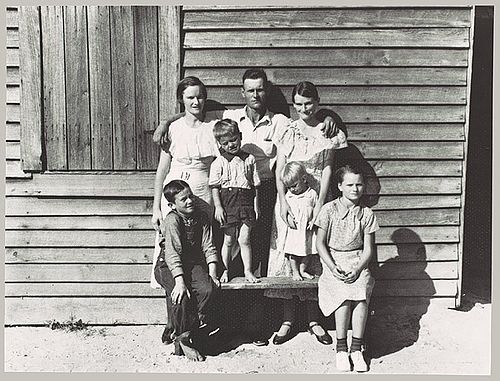
Sherrie Levine
After Walker Evans: 2
1981
Gelatin silver print
3 3/4 x 5 1/16 in (9.6 x 12.8 cm)
Metropolitan Museum of Art
© Sherrie Levine, The Metropolitan Museum of Art, Gift of the artist, 1995 (1995.266.2)
LL/7153
More about this photographer
| 
| | Apr 16, 2013 | T. Enami | | | |
Raise a glass of saki to remember Japanese photographer T. Enami
(1859, 17 February - 1929, 16 April)
Trade name of the Japanese Meiji period photographer Enami Nobukuni - what the T. stood for in his trade name is not precisely known, but believed to have been "Toshi", a variant reading of the Chinese character "Nobu" from his first name. In any case, he never spelled it out, using only T. Enami during his entire professional career.
Care should be taken not to confuse this photographer with his son Tamotsu who was not a photographer but took over his father's Yokohama studio printing and selling his father's works after the photographer died in 1929. The studio was destroyed first by earthquake in 1923, and then again by allied bombing in 1945.
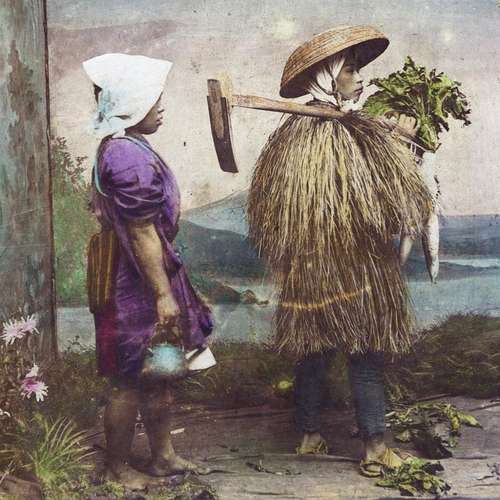
T. Enami
A Farmer and his Wife
1895 (ca)
Stereoview, half, detail
Private collection of Rob Oechsle
LL/26515
This same image was chosen for inclusion in "Odyssey: The Art of Photography at National Geographic" (1988), where it appeared in black and white as a full half-stereoview.

PhVTitle | Lightbox | Checklist
Exhibition: T. Enami: A rediscovered Meiji master
More about this photographer
| 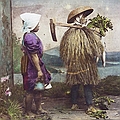
| | Apr 15, 2013 | Alexey Brodovitch | | | |
Raise a glass of vodka to the memory of art director, typographic designer, teacher and photographer Alexey Brodovitch
(1898 - 1971, 15 April)
Russian-born art director, typographic designer, teacher and photographer who moved to the USA in 1930. He was an immensely influential designer and was the artistic editor for ‘Harper‘s Bazaar‘ - a position that he held for twenty five years. This position allowed him to encourage and hire many influential photographers including Man Ray, Herbert Bayer and Henri Cartier-Bresson.
As Bob Hirsch has pointed out his style influenced others in the photographic world including Lisette Model, Irving Penn, Richard Avedon, Louise Dahl-Wolfe, Hiro, and Robert Frank.
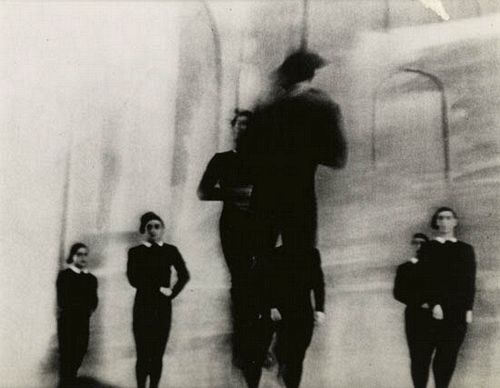
Alexey Brodovitch
Untitled (from the Ballet series, "Choreartium")
1935-1937 (taken) 1950s-1960s (early, print)
Silver copy print
8 x 10 in (20.3 x 25.4 cm)
Swann Galleries - New York
Courtesy of Swann Galleries (Auction May 20, 2010, Sale 2215 Lot 310)
LL/37164
More about this photographer
| 
| | Apr 14, 2013 | E.O. Hoppé | | | |
Happy birthday to photographer Emil Otto Hoppé
(1878, 14 April - 1972, 9 December)
English photographer born in Germany. Noted primarily for his portraits of British celebrities. He also did landscape photography in Britain, America and Germany.
I`ve included one of his American photographs of the Ford factory along with photographs by Charles Sheeler and Michael Kenna for comparison.
Thanks to Michael Kenna and the E. O. Hoppé Estate at Curatorial Assistance.
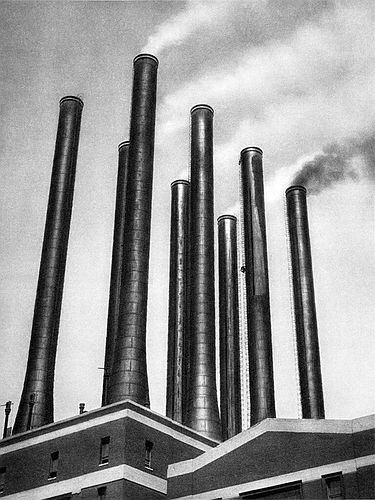
E.O. Hoppé
Smoke Stacks, Ford Factory, Detroit, Michigan
1926
Gelatin silver print
E.O. Hoppé Estate
© The E. O. Hoppé Estate at Curatorial Assistance, Inc. [17391-0000]
LL/16526
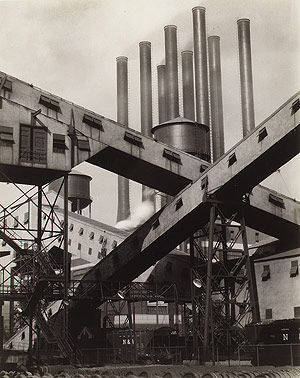
Charles Sheeler
Criss-Crossed Conveyors, River Rouge Plant, Ford Motor Company
1927
Gelatin silver print
23.5 x 18.8 cm (9 1/4 x 7 3/8 in)
Metropolitan Museum of Art
Copyright ® 2000-2005 The Metropolitan Museum of Art. - Ford Motor Company Collection, Gift of Ford Motor Company and John C. Waddell, 1987 (1987.1100.1)
© The Lane Collection
LL/6357
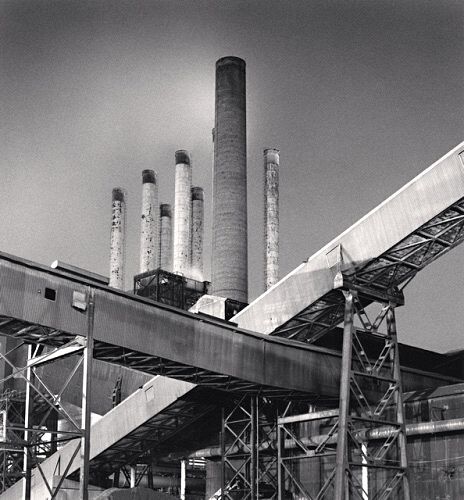
Michael Kenna
The Rouge, Study 52, Dearborn, Michigan
1994 (taken)
Gelatin silver print
Provided by the artist - Michael Kenna
© courtesy of the artist.
LL/44716
A copy of this print is in the collection of Princeton University Art Museum (Object Number: 1997-29.52)
More about this photographer
| 
| | Apr 12, 2013 | Imogen Cunningham | | | |
Raise a glass of Californian wine today to the memory of Imogen Cunningham
(1883, 12 April - 1976, 24 June)
Thanks to Bob Hirsch for permission to include his background piece.
Biography provided by Focal Press
Inspired to take up photography in 1901 after seeing the work of Gertrude Käsebier, she learned platinum printing from Edward S. Curtis, eventually opening a portrait studio in Seattle (1910). Her first work was romantic, soft-focus portraits and nudes. After moving to San Francisco in 1917, she adopted modernism. Cunningham’s images came to reflect Group f/64’s credo (of which she was a founder) that the "greatest aesthetic beauty, the fullest power of expression, the real worth of the medium lies in its pure form rather than in its superficial modifications." Her tightly rendered 1920s plant studies presents nature with machine precision or as sexual allusion, drawing sensual parallels to the female form that she explored through her long career. Although the picture is a faithful rendering of a plant, Cunningham’s concern was not the subject itself, but what the subject could become under the photographer’s control. She worked as a commercial photographer from the 1930s. Her last book, After Ninety (1979), was a sympathetic portrait collection of elderly people.
(Author: Robert Hirsch - Independent scholar and writer)
Michael Peres (Editor-in-Chief), 2007, Focal Encyclopedia of Photography, 4th edition, (Focal Press) [ISBN-10: 0240807405, ISBN-13: 978-0240807409]
(Used with permission)
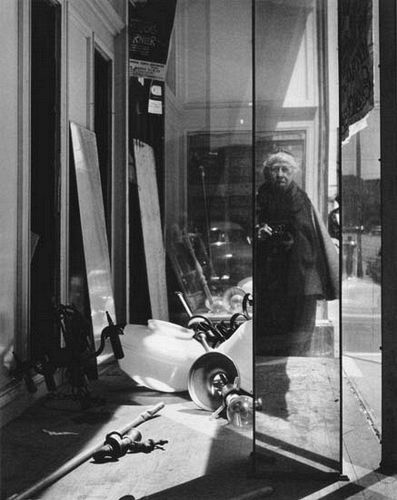
Imogen Cunningham
Self-portrait on Geary Street
1958 (taken) 1970s (early, print)
Gelatin silver print
9 3/4 x 7 3/4 in (24.8 x 19.7 cm)
Swann Galleries - New York
Courtesy of Swann Galleries (Auction, Oct 22, 2009, Photographs & Photographic Literature, Sale 2191 Lot 203)
LL/33443

PhVTitle | Lightbox | Checklist
Exhibition: Imogen Cunningham: Seen and Unseen
More about this photographer
| 
|
Ongoing • Newest • Newer • Older • Oldest Mode: LL C_NEWS_CF
|

